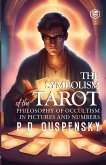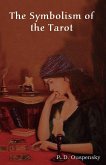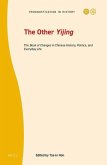In The Symbolism of the Tarot the great Russian mystic P.D. Ouspensky synthesizes ideas from the ancient sciences of Astrology, Kabbalah, Alchemy and Magic to create a profound guide to the symbolic nature of the Tarot. The Book focuses on the specialized faculty of mind that can be developed through the use of the cards. In these pages you will discover that the key to understanding the Tarot lies in the imagination because reading and interpreting the cards requires "a special cast of mind" and a developed power of creative thought. Ouspensky sees the Tarot first and foremost as a means of developing the higher sensitivity that allows us to see the symbolic language of esoteric traditions. P. D. Ouspensky also offers his own interpretive vision of each of the 22 cards of the Major Arcana revealing the hidden realities they represent. He asks us to remember that the meaning of authentic symbols is never fixed. The wisdom they contain is constantly shifting and moving and reading the cards is an art form. By practicing the art of the Tarot we can learn how to bring ourselves into direct contact with the secret worlds of inner wisdom that always lie beneath our ordinary perceptions of reality.








